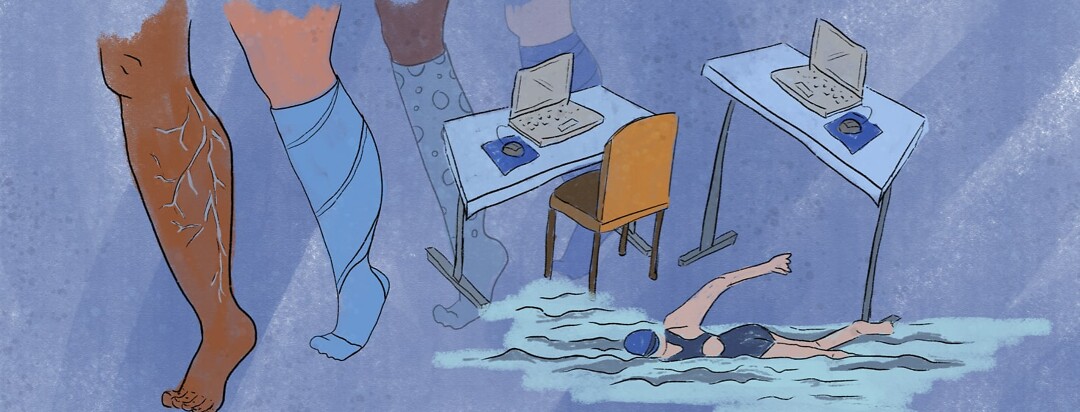Can Treating Leg Veins Help With Restless Legs Syndrome?
Someone with restless legs syndrome (RLS), also known as Willis-Ekbom disease, may find it difficult to find relief. They may complain of uncomfortable sensations in their legs, and their symptoms may be worse later in the day or night.
Some people have found relief for their RLS symptoms with treatments used for leg or varicose veins.
Several studies suggest a link between varicose veins and RLS. For example, 1 study found that out of 134 people with varicose veins, 35 of those people had RLS. After receiving treatment for leg veins, most of the people with RLS reported an improvement in their symptoms.1
What are varicose veins?
While they are not life-threatening, varicose veins can be painful. They occur in the legs and feet. Varicose veins are described as twisted, bulging, and bluish veins. Sometimes they are tender to the touch. They can often impact circulation. They can occur for a variety of reasons, including obesity, pregnancy, age, or family history.2
Varicose veins happen because of faulty leg valves. This means that instead of blood flowing to the heart, the veins sometimes cause the blood to flow backward.3
Women, especially those who are pregnant, tend to develop varicose veins more often than men do.2,3
What treatments for varicose veins may help RLS?
Doctors use 2 common treatments for leg veins. These include sclerotherapy and ablation.
Sclerotherapy is a procedure where a salt solution is injected into the vein. The solution reroutes the blood to healthier veins. It is a common treatment for varicose veins that has been used since the 1930s.
In a study of 113 people with RLS, all were given sclerotherapy treatment. Out of those, 111 found relief from their RLS symptoms.4
The other treatment is ablation. This process uses heat from a laser to damage and closes off the vein so it no longer leaks. It may also provide relief for people with RLS. A study of 35 people with RLS received ablation treatment. Afterward, 80 percent reported an improvement in their RLS symptoms.5
Lifestyle changes play a role in varicose veins and RLS
There are certain lifestyle changes you can make to help control varicose veins. Taking these steps may also help manage RLS symptoms:2
- Avoid sitting or standing for long periods of time – Sitting or standing in the same position can impact circulation. Blood may not be able to flow as effectively throughout the body. This can lead to pooling in the ankles, which can result in varicose veins. Taking small breaks throughout the day to stretch may help with circulation.
- Exercise – Being active may help with varicose veins and RLS. Walking, cycling, swimming, and yoga are good options. Before you engage in any exercise routine, it is important to speak with your doctor.
- Maintain a healthy weight – Extra pounds can put more pressure on your veins. Keeping your waistline trim may improve blood flow. Eating a healthy diet full of high protein, complex carbohydrates, and healthy fats can help keep weight in check. In addition, drinking plenty of water throughout the day can help with circulation.
- Wear compression stockings – Special socks may also help ease the discomfort of varicose veins. Wearing these puts slight pressure on your legs to prevent swelling.
If you have questions about treatments for varicose veins and whether they may help improve your RLS symptoms, talk to your doctor.
Would you like to talk to others in the RLS community about leg veins? Reach out in our forums.

Join the conversation